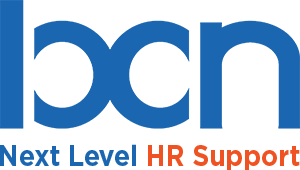Work-related injuries happen daily. According to the National Safety Council, a worker is injured on the job every 7 seconds. From back pain to broken bones, workers in all occupations and industries are exposed to various injuries and risks. Every year, the risks leave millions of workers without a job on a temporary or permanent basis.
Workplace hazards are often taken for granted in some workplaces. Some office workers spend the majority of the day at their desks, and no one expects to suffer an injury in that work environment until it actually happens. If an injury on the job occurs every 7 seconds, this can result in almost 100 million days of lost productivity every year. While some workers may be able to return to work after a few weeks of recovery, some workers will experience disabling effects from their injuries.
Costs of Workplace Accidents
The workplace injury statistics provided by the National Safety Council only reflect injuries that are made known. Many workers do not report accidents or the injuries that were sustained after the accident. As a result, these workers do not receive any treatment or compensation for the injuries. You are likely aware of the direct costs you pay in workers’ compensation insurance premiums.
What about the indirect costs of workplace accidents and injuries? You will likely have to bring in temporary employees and train them, make adjustments to the work schedules, perform an investigation, and execute restorative measures. Workplace accidents can result in a loss in productivity, damaged property, and a decrease in employee morale.
Employers take on the responsibility of keeping workers safe, and this is why it is so important to make every effort to provide a safe and hazard-free environment. If you are an employer of any size, it is vital to implement workplace safety tips in order to protect your employees and your financial assets. Workplace safety may seem like a frightening responsibility, but there are ways to develop an effective workplace safety program.
Intermittent Safety Inspections
Conducting workplace safety inspections can serve a bigger purpose than meeting compliance requirements. Workplace safety inspections can be an essential part of your injury prevention efforts if done properly. Most workplaces will conduct periodic safety inspections. At regular intervals, someone within the workplace will observe everything to identify and amend hazards. Safety inspections can provide reassurance to workers that the workplace is safe.
Safety Manual Development
While performing inspections and correcting the hazards, it will be a good idea to start working on developing your customized health and safety manual. Your workplace safety manual will spell out everything that your company will need to do to implement and manage your workplace safety program effectively.
Many companies may make the mistake of finding a safety manual online and implementing it in the workplace. Unfortunately, many companies will download a manual that contains information and standards that will not apply to the company. It is crucial to develop a manual customized to your company’s specific operations and hazards.
Scheduled Breaks
Taking scheduled breaks is not just a requirement by the Occupational Safety and Health Administration (OSHA), but it should also be a given. One of the main reasons OSHA requires scheduled breaks is that when workers are tired and worn out, they will be more prone to accidents and injuries. If awareness of workers’ surroundings is hindered by fatigue, workplace accidents will continue to increase. Taking scheduled breaks can help keep employees fresh.
OSHA Compliance
OSHA regulations are in place to help reduce future incidents by identifying potential risks and hazards. Companies need to follow safe work practices, provide protective equipment, and train employees on safety policies and workplace hazards.
Remaining OSHA compliant will allow you to maintain a safe and effective work environment for employees, leading to increased productivity and higher employee morale. Compliance with OSHA can also save your business money when there is a decrease in injuries and accidents. To remain compliant, it is essential to know which safety standards apply to your company and implement the policies to ensure you stay compliant.
Report Unsafe Conditions
Every employer is legally obligated to provide a safe workplace. There are policies and laws that outline what makes a safe and hazard-free workplace. This is why it is important for employers to encourage employees to work safely at all times. Employers should also encourage employees to report unsafe conditions.
Employees should not feel afraid to report unsafe conditions and violations out of fear of retaliation. Your workplace culture should reward employees who report violations, not punish them. Employees should be encouraged to have conversations about workplace safety and report any unsafe conditions or actions immediately.
Safety Training
A proactive workplace will be a safe workplace. Proper safety training helps workers understand their rights, and safety training will give them an overall view of specific hazards.
Proper safety training protects everyone against those hazards. Spending a few hours on safety training will save a company a significant amount of time and money. The cost of not doing safety training can be significant when you consider the amount of money you will spend on increased insurance premiums, OSHA citations, equipment replacement, and more.
Appropriate Clothing
Appropriate safety clothing policies for employees are essential for any workplace where dangerous working conditions exists. Comprehensive policies will help prevent workplace accidents and expenses. Safety clothing policies will also ensure your company remains in line with the standards set by OSHA.
Information about appropriate clothing and equipment needed for work is essential to any safety clothing policy. OSHA requires companies to identify workplace hazards. If certain types of clothing or shoes present a hazard, workers should wear clothing and footwear that will reduce the risk of injuries.
HR Audits
An HR audit can be used to help clarify the effectiveness of current policies. It will serve as the opportunity you need to protect your company, establish best workplace practices, and identify areas that need improvement.
Before conducting an HR audit, it is vital to identify the type of audit you want to conduct and select the type of audit that fulfills your needs. Do you need to review your entire HR department or do you need to focus on a specific area? Once you identify the best type of audit for your business, you will be able to foster support for the audit.
Service Tools Regularly
Do not wait until your tools begin falling apart to service them. Regular servicing of the tools is vital to prevent malfunctions. Tools that begin to malfunction can not only put a hold on business operations, but they can also be an injury risk. Proper servicing practices will include testing, adjustment, replacement, measurement, etc.
When possible, the servicing of the tools should be performed by professionals.
If appropriately implemented, the above tips can increase safety, which means less lost revenue due to factors like absenteeism. Are you thinking about establishing a safety program in your workplace?

